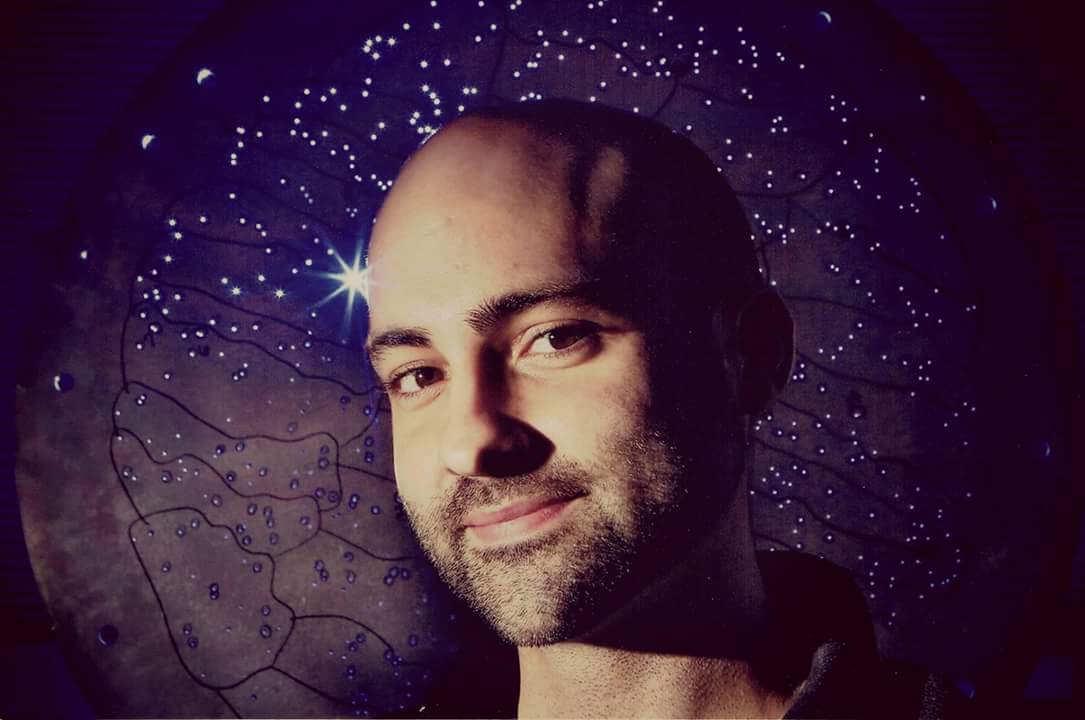Too much of a good thing: Early impacts delivered iron to Earth but almost wiped out life
Early life on Earth probably didn't depend on iron from meteorites after all.

Paul M. Sutter is an astrophysicist at SUNY Stony Brook and the Flatiron Institute, host of Ask a Spaceman and Space Radio, and author of How to Die in Space.
The Hadean era was a pretty wild ride. Earth had just formed, but meteorites constantly rained from the sky, pummeling our young planet for over 700 million years. Those impacts posed a major threat to the establishment of early life, because the biggest ones were capable of vaporizing oceans or melting Earth's surface.
But those meteorites also brought with them a crucial ingredient, iron, which helped create the conditions necessary for life to emerge in the first place, many scientists believe.
A recent study, however, has found that the hazards posed by large impactors far outweighed their benefits and that those early impacts likely almost left our planet a dead world.
Related: 7 theories about the origin of life
Don't look up
About 4.5 billion years ago, the early solar system was a violent, chaotic place. Even though the planets had just formed, the protoplanetary disk that birthed them had not yet cleared out. Instead, it was filled with the leftover debris of planetary formation — bits of unformed worlds and wreckage from major collisions.
Those rocks floated aimlessly through the solar system, causing impact after impact. Indeed, the craters on Earth's moon are evidence of that past violence, etched into its very surface.
Breaking space news, the latest updates on rocket launches, skywatching events and more!
At some point during or shortly after this chaotic period, life emerged on Earth. But that early life did not have a great time, because each impact brought with it the possibility of total calamity.
In the recent study, a pair of planetary scientists investigated the nature of those impacts and the effects they had on the early Earth. They found that it would have taken a lot to wipe out life. An incoming asteroid would have needed to be at least 435 miles (700 kilometers) wide to be capable of generating enough heat on impact to vaporize an ocean.
And it would have taken even larger rocks, at least 1,243 miles (2,000 km) across, to completely melt Earth's crust, the researchers reported in a paper accepted for publication in The Planetary Science Journal and published on the preprint server arXiv.
Thankfully, most rocks floating around the solar system in the Hadean era were likely smaller, so potentially life-quenching impactors were probably rare.
Related: The first life on Earth depended on a deadly poisonous gas, study suggests
Sweet, sweet iron
Even so, both scenarios would have been pretty devastating for early life. But those meteorites delivered something scientists think may have been absolutely essential to getting life started in the first place: iron.
Earth's current atmosphere is rich in oxygen, a byproduct of photosynthesis. But the early Earth had no photosynthesis, so its atmosphere was in a so-called reducing state, rich in molecules such as carbon dioxide, water, methane and nitrogen.
The famous Miller-Urey experiment in 1952 found that a reducing atmosphere, especially one with lots of carbon dioxide and methane, can spur the generation of compounds that can eventually go on to build ribonucleic acid (RNA), a potential early precursor for life.
The impacts that blasted the early Earth delivered lots and lots of iron. That iron could have reduced the oxygen in primitive oceans, making them the perfect chemical petri dishes for generating life. So, to get started, the first life may have needed iron delivery from outer space to have the right conditions on Earth's surface.
But ironically, only the largest impactors would have been capable of delivering enough iron to make a difference, so the situation is a bit of a balancing act: Could large asteroids deliver enough iron to the surface without wiping out the life that was trying to get a foothold there?
Bad news
Ultimately, the planetary scientists found that big impacts probably weren't essential to the rise of life on Earth. Only the largest, moon-size meteorites could have reduced entire oceans, but rocks that size also would have completely melted the surface. So yes, those oceans would have been chemically ripe for generating life — if they hadn't been totally vaporized.
Smaller impacts, on the other hand, tend to simply bury themselves deep in Earth's crust, where their delivery of iron eventually becomes a part of the planet's body rather than doing anything interesting to the oceans.
So what about the very smallest, and most common, impactors? Despite the relative safety of those impacts, they don't deliver nearly enough iron in the first place to do anything to advance the causes of life, the researchers found.
The new research discourages the line of thinking that early life needed the iron in those meteorites to get the right chemical mix to survive. Instead, it seems much more likely that life eventually emerged after the impacts were over and had to make do with only a mildly reducing atmosphere to generate the precursors to RNA.
Learn more by listening to the "Ask a Spaceman" podcast, available on iTunes and askaspaceman.com. Ask your own question on Twitter using #AskASpaceman or by following Paul @PaulMattSutter and facebook.com/PaulMattSutter.
Follow us on Twitter @Spacedotcom or on Facebook.
Join our Space Forums to keep talking space on the latest missions, night sky and more! And if you have a news tip, correction or comment, let us know at: community@space.com.

Paul M. Sutter is a cosmologist at Johns Hopkins University, host of Ask a Spaceman, and author of How to Die in Space.
